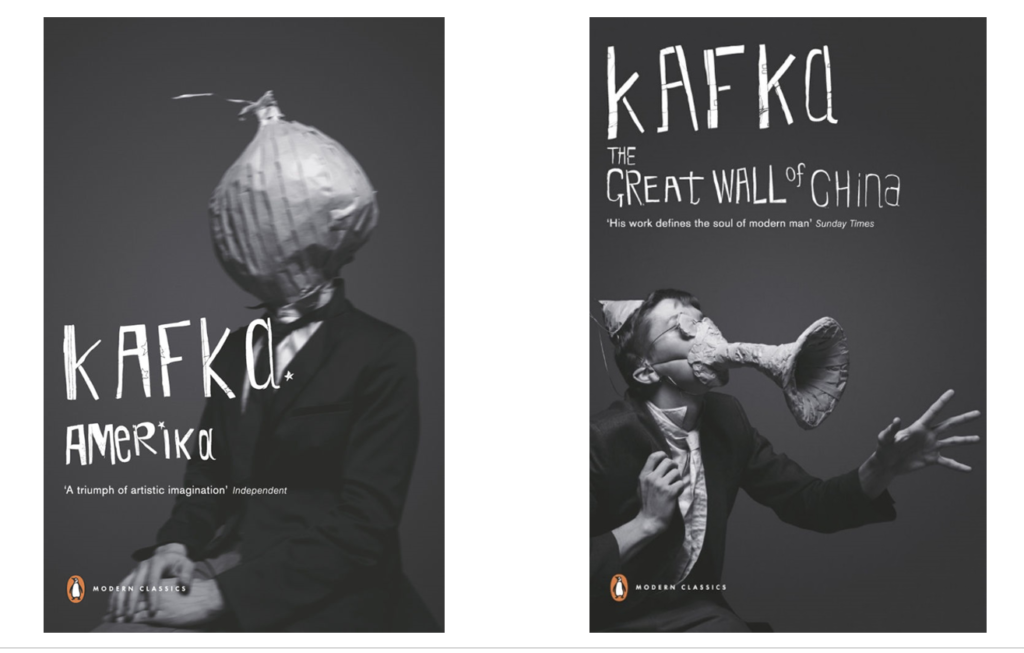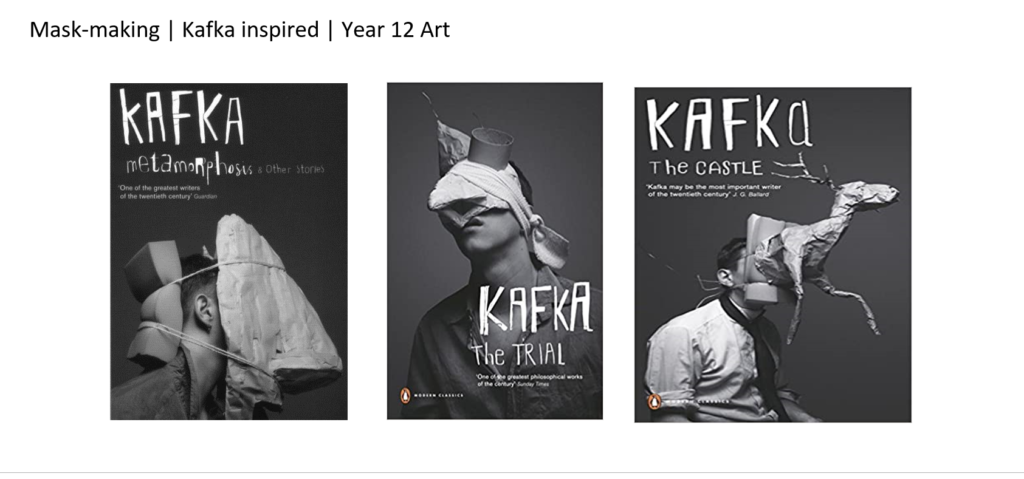Monthly Archives: July 2020
Filters
Why study art ?
fox art competition 2020
Click on the link below and download the pdf…print off, complete and enter!
Good luck!

http://www.artscentre.je/wp-content/uploads/2020/07/JERSEY-Application-Form-Fox-2020.pdf
THE RELATED study

What is a Related Study?
- a research essay or Powerpoint (1000 words min / 3000 words max)
- a chance for you to explore and investigate…must be linked to your practical work / project
- develop your knowledge and understanding
- critical and analytical
- vital for university accreditation
- 20% of overall mark…
- LINK TO EXAMPLES
Time Frame and expectations…
First Draft to be submitted Autumn Half Term
Final Draft to be submitted by Christmas 2024
Golden Rules
- Link to your own work
- Use only credible sources (do not rely ONLY on wikipedia)
- Keep to established artists / artworks (avoid obscure artists)
Explore a range of source material…
Objective: Criteria from the Syllabus
- Be aware of some of the methods employed by critics and historians within the history of art.
- Demonstrate a sound understanding of your chosen area of study with appropriate use of critical vocabulary. – use for image analysis
- Investigate a wide range of work and sources
- Develop a personal and critical inquiry.
Academic Sources:
- Research and identify 3-5 literary sources from a variety of media such as books, journal/magazines, internet, Youtube/video .
- Begin to read essay, texts and interviews with your chosen artists as well as commentary from critics, historians and others.
- It’s important that you show evidence of reading and draw upon different pints of view – not only your own.
- Take notes when you’re reading…key words, concepts, passages
- Write down page number, author, year, title, publisher, place of publication so you can list source in a bibliography
Quotation and Referencing:
- Use quotes to support or disprove your argument
- Use quotes to show evidence of reading
- Use Harvard System of Referencing…see Powerpoint: harvard system of referencing for further details on how to use it.
Essay Plan:
Make a plan that lists what you are going to write about in each paragraph – essay structure.
- Essay question:
- Opening quote
- Introduction (250-500 words): What is your area study? Which artists will you be analysing and why? How will you be responding to their work and essay question? Include a quotation. Due date
- Pg 1 (500 words): Historical/ theoretical context within art, photography and visual culture relevant to your area of study. Make links to art movements/ isms and some of the methods employed by critics and historian. Add quotation. Due date =
- Pg 2 (500 words): Analyse first artist in relation to your essay question. Present and evaluate your own images and responses.Add quotation. Due Date
- Pg 3 (500 words): Analyse second artist in relation to your essay question. Present and evaluate your own images and responses.Add quotation. Due Date
- Conclusion (250-500 words): Draw parallels, explore differences/ similarities between artists and that of your own work that you have produced. Add quotation. Due Date
- Bibliography: List all relevant sources used
Essay question: Hypothesis
Think of a hypothesis and list possible essay questions
Here is a list of possible questions to investigate that may help you.
Opening quote: Choose a quote from either one of your artists or critics. It has to be something that relates to your investigation

ESSAY STRUCTURE
See below for a possible essay structure. Further help can be found here essay structure or see link here The Royal Literay Fund

Introduction (250-500 words). Think about an opening that will draw your reader in e.g. you can use an opening quote that sets the scene. You should include in your introduction an outline of your intention of your study e.g. what and who are you going to investigate. How does this area/ work interest you? What are you trying to prove/challenge, argument/ counter-argument? What historical or theoretical context is the work situated within. Include 1 or 2 quotes for or against. What links are there with your previous studies? What have you explored so far in your Coursework or what are you going to photograph? How did or will your work develop.
Paragraph 1 Structure (500 words) : Use subheading. This paragraph covers the first thing you said in your introduction that you would address. The first sentence introduces the main idea of the paragraph. Other sentences develop the subject of the paragraph.
Content: you could look at the following…exemplify your hypothesis within a historical and theoretical context. Write about how your area of study and own work is linked to a specific art movement/ ism. Research and read key text and articles from critics, historians and artists associated with the movement/ism. Use quotes from sources to make a point, back it up with evidence or an example (a photograph), explain how the image supports the point made or how your interpretation of the work may disapprove. How does the photograph compare or contrast with others made by the same photographer, or to other images made in the same period or of the same genre by other artists. How does the photograph relate to visual representation in general, and in particularly to the history and theory of photography, arts and culture.
Include relevant examples, illustrations, details, quotations, and references showing evidence of reading, knowledge and understanding of history, theory and context!
Paragraph 2 Structure (500 words) : Use subheading. In the first sentence or opening sentences, link the paragraph to the previous paragraph, then introduce the main idea of the new paragraph. Other sentences develop the paragraphs subject (use relevant examples, quotations, visuals to illustrate your analysis, thoughts etc)
Content: you could look at the following...Introduce your first artist. Select key images, ideas or concepts and analyse in-depth using specific model of analysis (describe, interpret and evaluate) – refer to your hypothesis. Contextualise…what was going on in the world at the time; artistically, politically, socially, culturally. Other influences…artists, teachers, mentors etc. Personal situations or circumstances…describe key events in the artist’s life that may have influenced the work. Include examples of your own photographs, experiments or early responses and analyse, relate and link to the above. Set the scene for next paragraph.
Include relevant examples, illustrations, details, quotations, and references showing evidence of reading, knowledge and understanding of history, theory and context!
Paragraph 3 Structure (500 words) : Use subheading. In the first sentence or opening sentences, link the paragraph to the previous paragraph, then introduce the main idea of the new paragraph. Other sentences develop the paragraphs subject (use relevant examples, quotations, visuals to illustrate your analysis, thoughts etc)
Content: you could look at the following…Introduce key works, ideas or concepts from your second photographer and analyse in-depth – refer to your hypothesis…Use questions in Pg 2 or add…What information has been selected by the artist and what do you find interesting in the artwork? What do we know about the artwork’s subject? Does the artwork have an emotional or physical impact? What did the artist intend? How has the image been used? What are the links or connections to the other artist in Pg 2? Include examples of your own artists and experiments as your work develop in response to the above and analyse, compare, contrast etc. Set the scene for next paragraph.
Include relevant examples, illustrations, details, quotations, and references showing evidence of reading, knowledge and understanding of history, theory and context!
Conclusion (500 words) : Write a conclusion of your essay that also includes an evaluation of your final responses and experiments.
List the key points from your investigation and analysis of the artist(s) work – refer to your hypothesis. Can you prove or Disprove your theory – include final quote(s). Has anything been left unanswered? Do not make it a tribute! Do not introduce new material! Summarise what you have learned. How have you been influenced? Show how you have selected your final outcomes including an evaluation and how your work changed and developed alongside your investigation.
Bibliography: List all the sources that you used and only those that you have cited in your text. Where there are two or more works by one author in the same year distinguish them as 1988a, 1988b etc. Arrange literature in alphabetical order by author, or where no author is named, by the name of the museum or other organisation which produced the text. Apart from listing literature you must also list all other sources in alphabetical order e.g. websites, exhibitions, Youtube/TV/ Videos / DVD/ Music etc.
Literacy Support

Vital Reading and links
GROUP DISCUSSION ACTIVITIES

GUERNICA v GOYA
You will be comparing Picasso’s Guernica (1937) to Goya’s Third of May 1808 (1814) and discuss how both paintings deal with the futility of war and violence. The Third of May execution was an indiscriminate killing of civilians by French soldiers in reprisal for a guerrilla attack the previous day, and Guernica was a response to the fascist forces’ bombing of Guernica town in Northern Spain by the German Airforce during the Spanish Civil War in 1937.

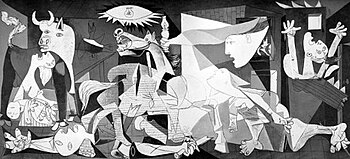
Show Me Boards
3 key points about Guernica
3 key points about Third of May
Cold Calling
Question : What are the artists commenting on in these paintings?
How are they doing this?
Why are they doing this ?
Think – Pair – Share
Look carefully at the structure of the Related Study Essay and then discuss what should go in each section…
Intro – body – conclusion
Use what suits you, or the subject There are lots of different methods for structuring extended responses, you may prefer one over the other, or some methods may suit different subjects better.
Some other examples are:
- P.E.A. – Point, Evidence, Analysis
- P.E.A.C.H. – Point, Evidence, Analysis, Contrast, Historical Context
- P.Q.D. – Point, Quote, Discuss
Essential Art Movements and Styles
Modernism v Postmodernism

Some Essay Possibilities…
Cindy Sherman – Claude Cahun (gender roles)
John Piper – Anselm Kiefer (memories and mythologies of war)
Robert Rauschenberg – Kurt Schwitters (political / dada / collage)
Paula Rego – Frida Kahlo (biographical / gender challenging, identity and culture)
Jenny Saville – Lucian Freud (body image)
Lucian Freud – Tai Shan Schierenberg (portrait and The Male Gaze)
Michael Armitage – Yinka Shonibare – Kara Walker (colonialism, race, slavery, identity)
Peter Doig – (magical realism, heritage and colonialism)- Kara Walker (colonialism, race, slavery, identity) Hurvin Anderson
Francis Bacon – Jean Michel Basquiat (race / prejudice / stereotypes, religion)
Damien Hirst – Marc Quinn (mortality, fragility and banality of life) – Sam Taylor-Johnson – Vanitas Painting / Photography
Can Luc Tuymans be classified as a political painter?
How does the work of Ketna Patel illustrate the growing impact of media culture on Asian cultures? (2014)
How far Andy Warhol’s interest in morbidity explored in his “Death and Disaster’ series? (2014)
How the cultural aspects of Jesse Trevino’s life impacted his artwork (Part1, Part2) (2008)
The influence on the Casa Batllo (1904-6) by the architect Antoni Gaudi (Part1, Part2, Part3, Part4) (2011)
Is the distortion of Francis Bacon and Jenny Saville’s artwork gender related? (Part1, Part2, Part3) (2011)
To what extent has Damien Hirst explored the themes of Life and Death in his work? (2013)
To what extent has the design of Federation Square been a success?
When does photojournalism transcend into art? (Part1, Part2, Part3) (2011)
How does the work of Yinka Shonibare illustrate the changing role of African art in a global society?
“In what way did African art influence on the work of Henry Moore”
How to analyse and interpret…starting points
What…is the artwork? Describe it…
How…how was it made? Materials, processes
Where…was the artwork made, where was the artist from?
When…the era / time period is CRUCIAL.
Why…reasons, function,purpose (most art is a reaction to something)
NEXT STEPS
- Choosing an artist to focus on…
- Devising a title for your essay…
- A question / hypothesis to work from…
- Developing an argument- for and against…
- Concluding with a balanced and critical view…
HANS HOLBEIN V GRAYSON PERRY
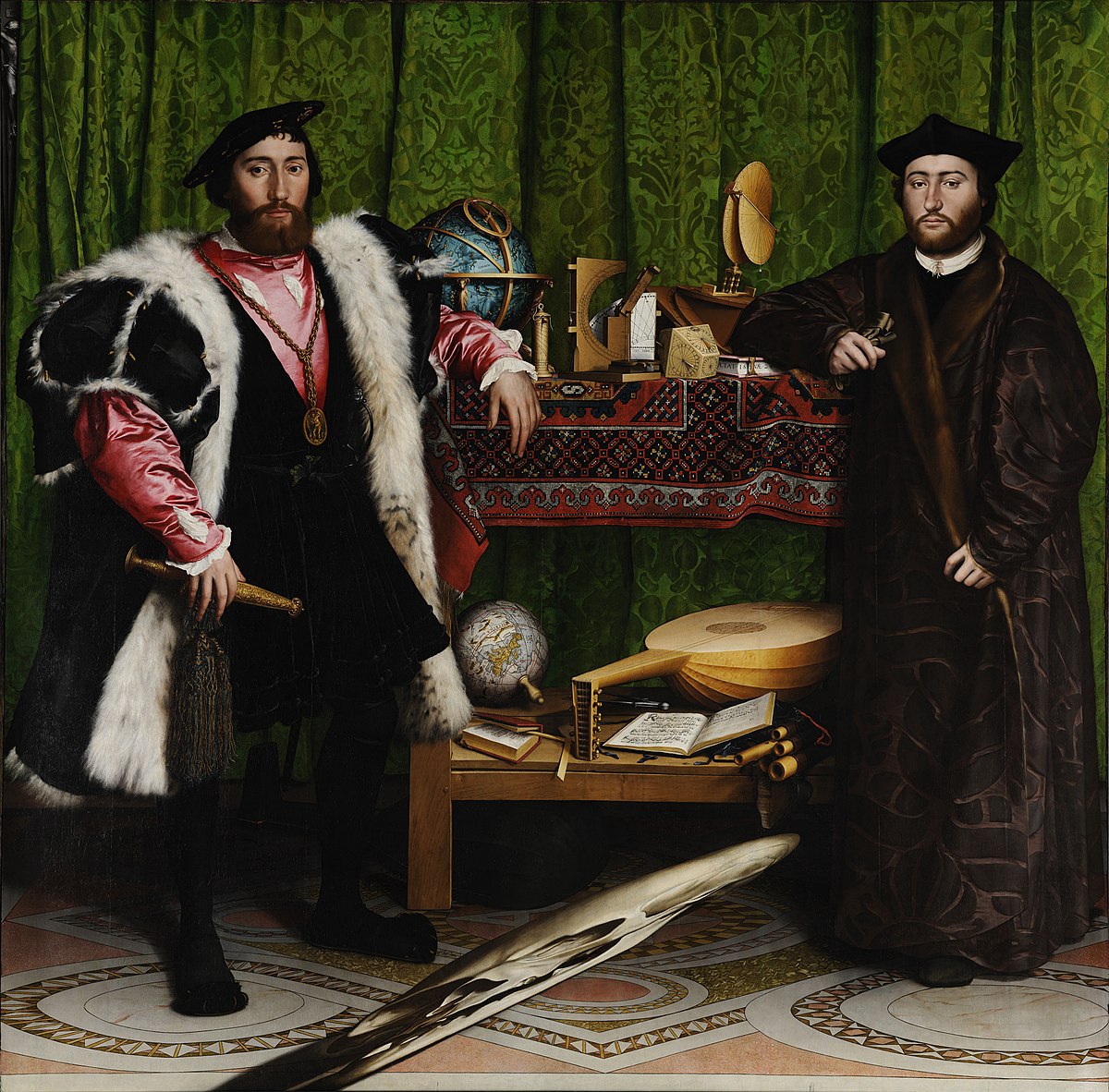

- Related Studies work best if there is a question to focus your research and opinions
- So what questions could you use to compare the work of Holbein and Perry? What avenues could you take your research in?
- E.g. Does Art reinforce gender stereotypes or challenge them? Comparing the work of Hans Holbein (The Ambassadors) and Grayson Perry (The Adoration of the Cage Fighters)
- How are the genders represented in each painting?
- How does this fit in with the context / time period?
- How will they be viewed in the future, e.g. look at how Holbein’s work is viewed now vs when it was originally painted vs how well Perry’s will be viewed in the future
- Does the medium affect the artwork – e.g. Perry’s is a tapestry, traditionally a female past time? Holbein was a superstar painter at the time…
- What gender is THE ARTIST?
- Explore the male gaze vs gender identity
- Laura Mulvey The Male Gaze
- Judith Butler Gender Trouble
- Simone De Beauvoir The Second Sex
- Ensure you include pertinent quotes from key texts
- Example :
- The Guardian – Grayson Perry
Glossary of Art Terms
A Level art

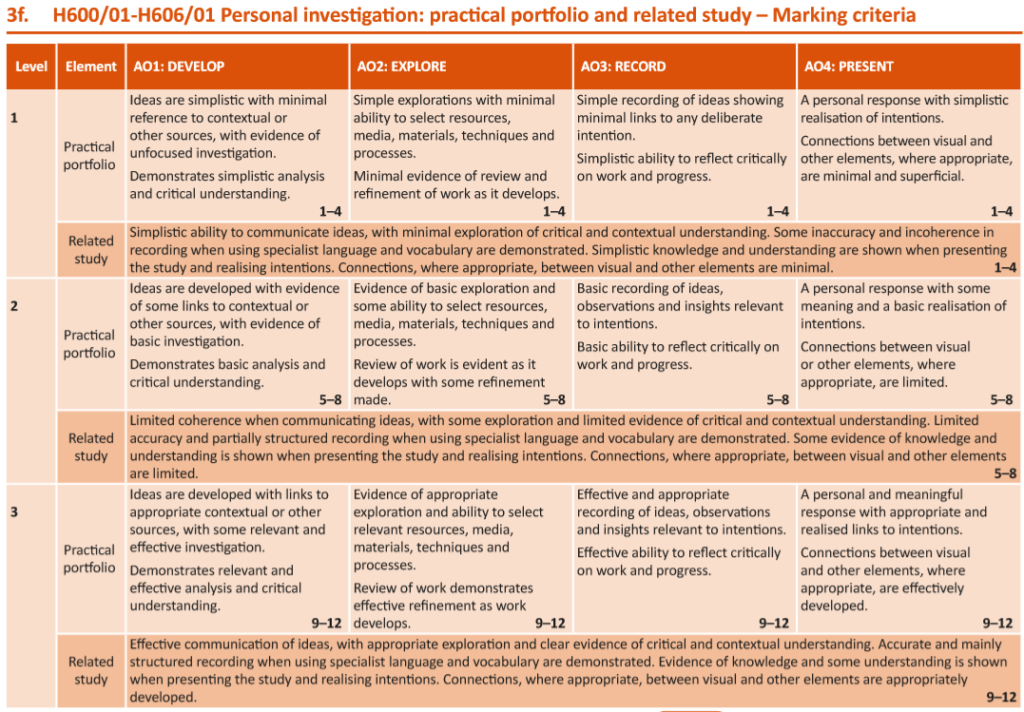

Being Human…
Starting Points…making and observing
Simple things – paper and it’s value in life

This exercise combines sculptural 3D form with linear observational drawings of angular planes. You will have two sheets of white paper and a pencil, as well as instructions for folding the origami crane or paper plane, scrumpled up ball etc. You must fold the paper and then spend the rest of the lesson drawing this from a variety of angles, giving attention to line, tone, weight and shadows.

Use white A4 paper and a graphite pencil. Paper is creased, folded, ripped, rolled and torn to create tiny sculptures that each represent a chosen emotion (pain, sorrow, excitement etc). These are then drawn, including shadows, with notes about the chosen emotion. This encourages you to think about how abstract forms, shapes, lines and tone suggest meaning.



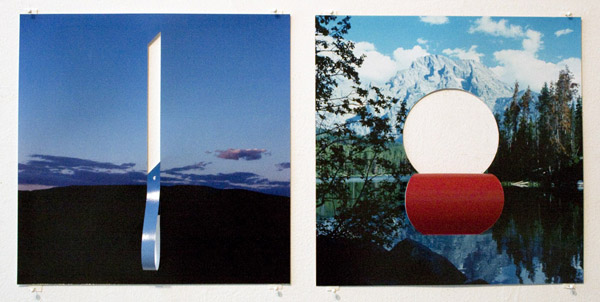

You can use white paper, scissors to produce an abstract sculpture. In particular, you should think about how light will pass through the sculpture and cast shadows. Photograph your sculpture creatively as a homework exercise, using a spotlight and black sheet as a backdrop, for example.
Artist References
Edgar Martins
FROM THE SERIES SILOQUIES AND SOLILOQUIES ON DEATH, LIFE AND OTHER INTERLUDES, PAPER PLANE INSPIRED ON A LETTER WRITTEN BY AN INMATE IN THE EARLY 1900’S, WHICH WAS THROWN FROM A PRISON CELL WINDOW, 2016

Martin Creed
There’s something about a blank page. There’s a sense of possibility, of course: this could be where it all goes right – this page could soon be home to the perfect drawing or piece of text – but there’s also a sense of anxiety, after all what can go very right can also go very wrong. We’ve probably all been there, stuck in the cycle that sees each new page end up in the bin. You write. You read. You screw up the page and start again. If the blank page carries a sense of possibility I guess the scrunched up ball of paper carries the sense of exasperation.
In the case of Martin Creed’s Work No. 88, A sheet of A4 paper crumpled into a ball the connotation of disappointment at things not going according to plan is there to an extent but the tight roundness of the resulting ball is too close to perfect to be the result of anything other than a more careful, considered crumpling up of the page.

Brendan Austin
Brendan Austin creates imaginary landscapes out of crumpled pieces of paper. He calls them ‘Paper Mountains‘. Austin examines what we mean by nature and the way humans have impacted upon it. “The isolated desert city running on oil generators, the mars like landscapes of a volcanic environment and the mountains made from paper all attempt to start a conversation concerning the loss of meaning and reality.” The resulting images appear both recognisable as landscapes but also suggest a sense of artifice. Humble materials are made to carry an important message.
Photographing Paper
- Take an A4 piece of plain white paper
- Scrunch the paper into a ball
- Using your iphone / camera photograph the ball
- Think carefully and creatively about how you can transform the paper ball…
- Try to show various approaches to composition and framing, exposure, lighting, movement, focus, shadow-making
- Take as many different, interesting, quirky, sequential, right, wrong and intelligent photographs of the paper ball.
- Then make a series of drawings from your images — try a grid of thumbnails, or panoramic compositions…
High Tonal Value / Contrast in drawings







CUT-N-PASTE PORTRAIT EXERCISE
Influences



Rankin (Destroy Project)

Joseph Cartwright (Instagram)
John Stezaker
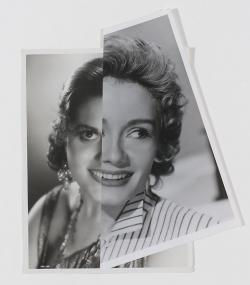

Kensuoke Koike
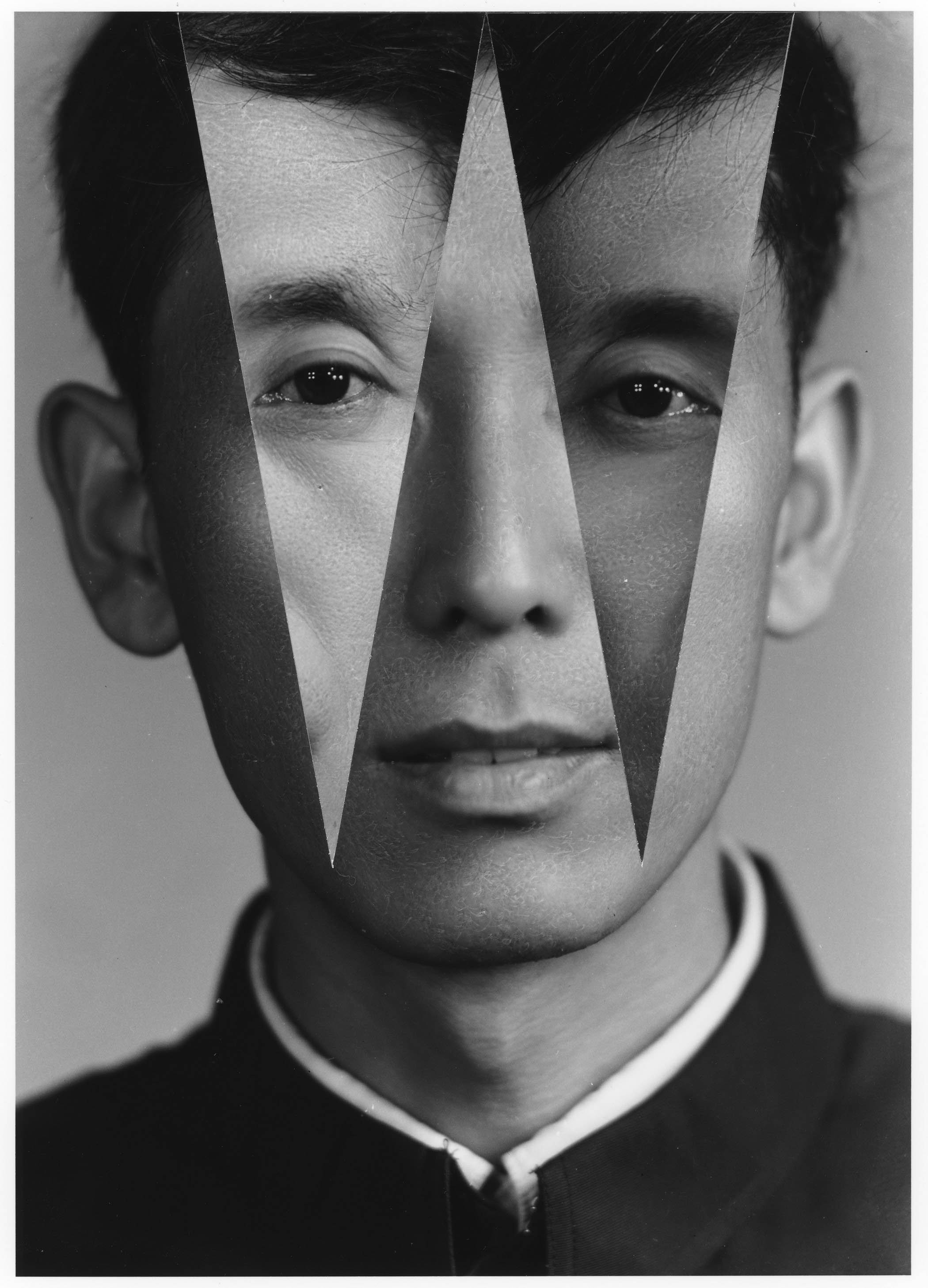
Jesse Draxler



- cut-n-paste your own self portrait and portrait examples
- these will then be stimulus for you to draw and paint from
- the next stage is to create 3-d renditions of your ideas / designs
gcse art+graphics
Ib visual arts

ALL TOO HUMAN – PROJECT
Starting Points…making and observing

This exercise combines sculptural 3D form with linear observational drawings of angular planes. You will have two sheets of white paper and a pencil, as well as instructions for folding the origami crane or paper plane, scrumpled up ball etc. You must fold the paper and then spend the rest of the lesson drawing this from a variety of angles, giving attention to line, tone, weight and shadows.

Use white A4 paper and a graphite pencil. Paper is creased, folded, ripped, rolled and torn to create tiny sculptures that each represent a chosen emotion (pain, sorrow, excitement etc). These are then drawn, including shadows, with notes about the chosen emotion. This encourages you to think about how abstract forms, shapes, lines and tone suggest meaning.





You can use white paper, scissors to produce an abstract sculpture. In particular, you should think about how light will pass through the sculpture and cast shadows. Photograph your sculpture creatively as a homework exercise, using a spotlight and black sheet as a backdrop, for example.
Artist References
Edgar Martins
FROM THE SERIES SILOQUIES AND SOLILOQUIES ON DEATH, LIFE AND OTHER INTERLUDES, PAPER PLANE INSPIRED ON A LETTER WRITTEN BY AN INMATE IN THE EARLY 1900’S, WHICH WAS THROWN FROM A PRISON CELL WINDOW, 2016

Martin Creed
There’s something about a blank page. There’s a sense of possibility, of course: this could be where it all goes right – this page could soon be home to the perfect drawing or piece of text – but there’s also a sense of anxiety, after all what can go very right can also go very wrong. We’ve probably all been there, stuck in the cycle that sees each new page end up in the bin. You write. You read. You screw up the page and start again. If the blank page carries a sense of possibility I guess the scrunched up ball of paper carries the sense of exasperation.
In the case of Martin Creed’s Work No. 88, A sheet of A4 paper crumpled into a ball the connotation of disappointment at things not going according to plan is there to an extent but the tight roundness of the resulting ball is too close to perfect to be the result of anything other than a more careful, considered crumpling up of the page.

Brendan Austin
Brendan Austin creates imaginary landscapes out of crumpled pieces of paper. He calls them ‘Paper Mountains‘. Austin examines what we mean by nature and the way humans have impacted upon it. “The isolated desert city running on oil generators, the mars like landscapes of a volcanic environment and the mountains made from paper all attempt to start a conversation concerning the loss of meaning and reality.” The resulting images appear both recognisable as landscapes but also suggest a sense of artifice. Humble materials are made to carry an important message.
Photographing Paper
- Take an A4 piece of plain white paper
- Scrunch the paper into a ball
- Using your iphone / camera photograph the ball
- Think carefully and creatively about how you can transform the paper ball…
- Try to show various approaches to composition and framing, exposure, lighting, movement, focus, shadow-making
- Take as many different, interesting, quirky, sequential, right, wrong and intelligent photographs of the paper ball.
- Then make a series of drawings from your images — try a grid of thumbnails, or panoramic compositions…
CUT-N-PASTE PORTRAIT EXERCISE
Influences
CUT & PASTE
The Surrealists inherited an interest in photomontage from Dada who had used this technique to disrupt the dominance of easel painting in the art world. The Surrealists enjoyed the chance associations of different elements that suggested the logic of dreams. Often incorporating text (also reflecting a poetic rather than logical choice and arrangement) photomontages feature in prominently in Surrealist photography and have gone on to influence subsequent generations of artists and the advertising industry, in the process losing some of their subversive edge.
https://www.widewalls.ch/magazine/photomontage-art



Rankin (Destroy Project)

Joseph Cartwright (Instagram)
John Stezaker


Kensuoke Koike

Jesse Draxler




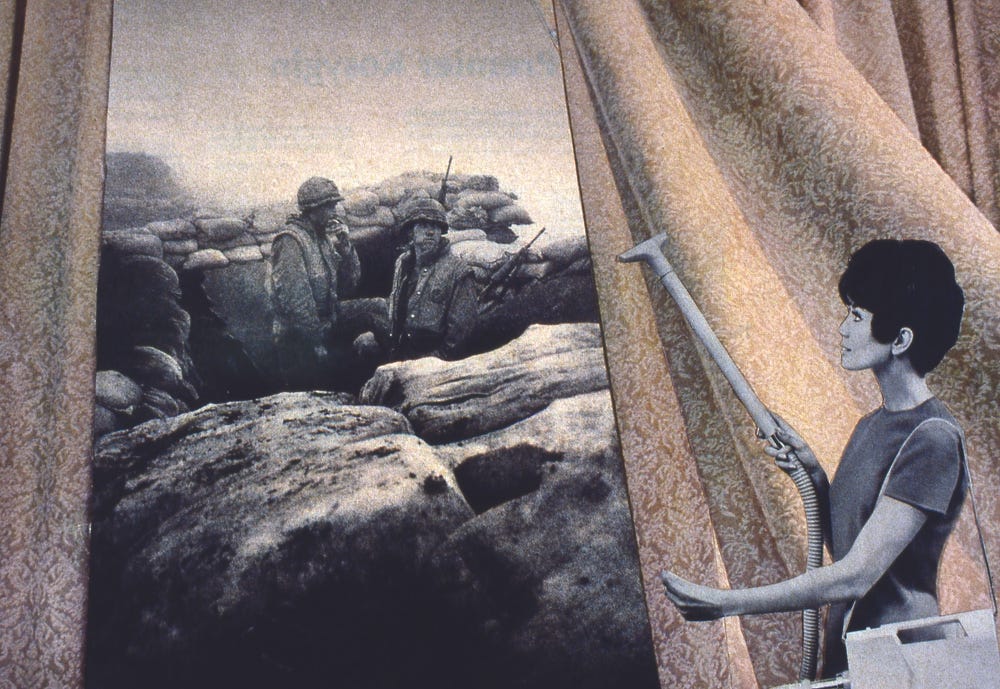
EXQUISITE CORPSE
Influenced by Dada, Surrealist artists developed games of chance such as ‘The Exquisite Corpse’ to also incorporate collage and photomontage. This is similar to an old parlour game called Consequences in which players write in turn on a sheet of paper, fold to conceal, and then pass to the next player for a further contribution.
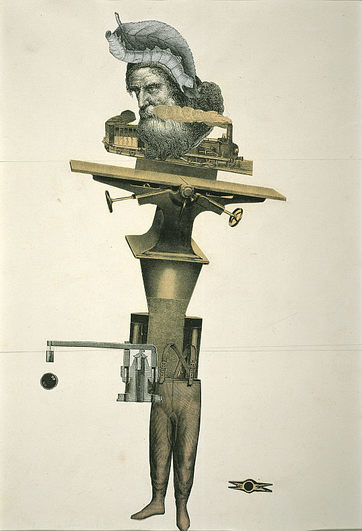
André Breton, Jacqueline Lamba, Yves Tanguy – Exquisite Corpse 1938

MASKS AND HEADRESSES
